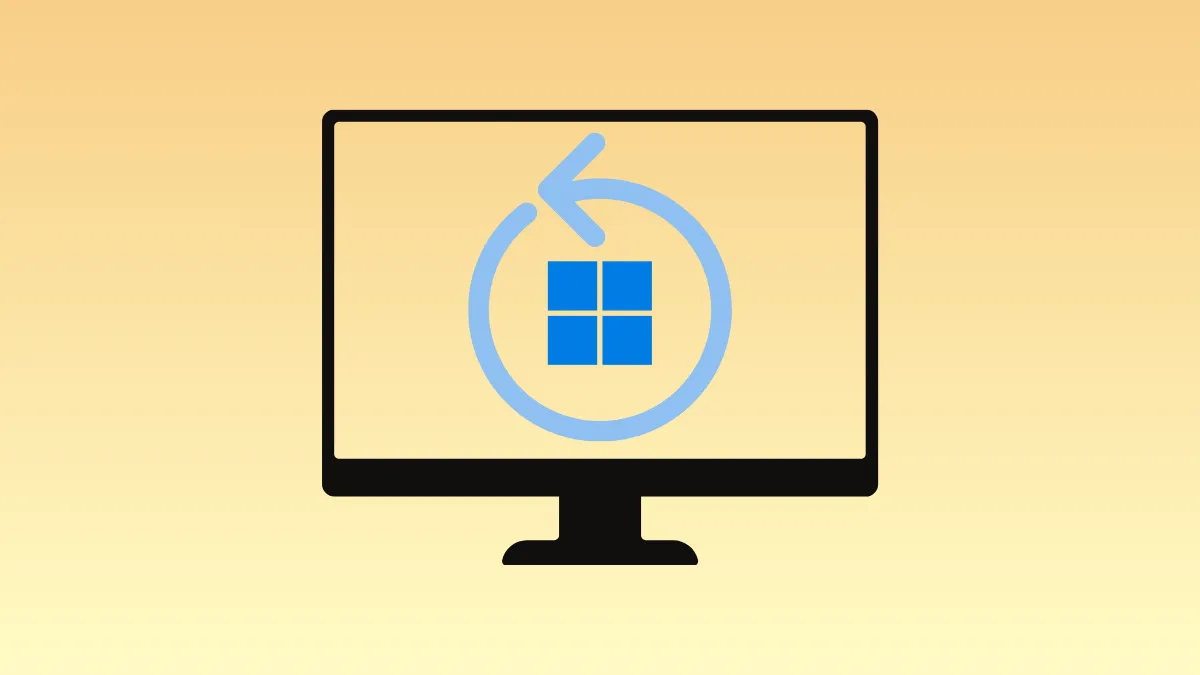Windows 11 users occasionally encounter system performance issues, errors, or corrupted files that standard troubleshooting methods can't resolve. In these cases, reinstalling Windows 11 can restore system stability. Unlike previous Windows versions, Windows 11 provides a straightforward method to reinstall the operating system without deleting your apps, files, or settings.
Below, you'll find detailed instructions on how to reinstall Windows 11 safely and effectively, ensuring your installed applications and personal files remain untouched.
Reinstall Windows 11 Without Losing Apps and Files via Windows Settings
Step 1: Ensure your Windows 11 device is connected to the internet and plugged into a power source. Open the Settings application by pressing Win + I on your keyboard. Navigate to System > Recovery.

Step 2: On the Recovery page, locate the option labeled "Fix problems using Windows Update" and click the "Reinstall now" button next to it.
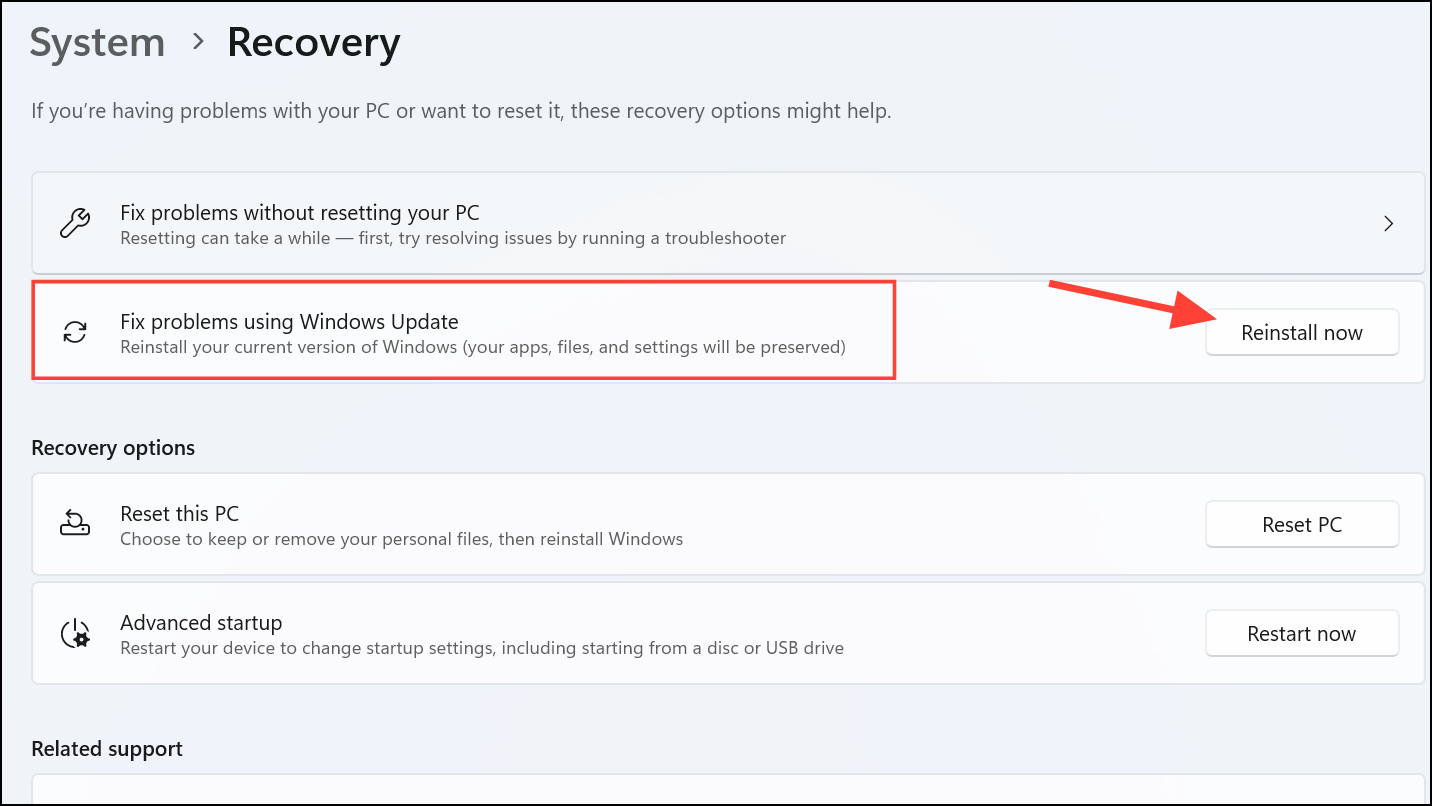
Step 3: A prompt appears confirming your choice. Click "OK" to start the reinstallation process. Windows will now begin downloading necessary installation files via Windows Update. You can monitor the download progress under Settings > Windows Update. Feel free to continue using your PC during this phase.
Step 4: Once the download completes, Windows will automatically initiate the installation process in the background. Again, this will not interrupt your current activities. You can track the installation progress in the same Windows Update settings page.
Step 5: After the installation files are fully prepared, you'll see a notification prompting you to restart your PC. Save any ongoing work and click "Restart" to begin the reinstallation.
Step 6: During the restart, Windows will display a message indicating it's working on updates. The system may restart multiple times, and this process could take some time, depending on your hardware.
Step 7: Once the process is complete, your PC will boot to the Windows 11 lock screen. Sign in using your usual credentials. Your personal files, apps, and settings should remain exactly as they were prior to reinstallation.
Step 8: Finally, navigate back to Settings > Windows Update and click "Check for updates" to ensure your system has the latest updates.
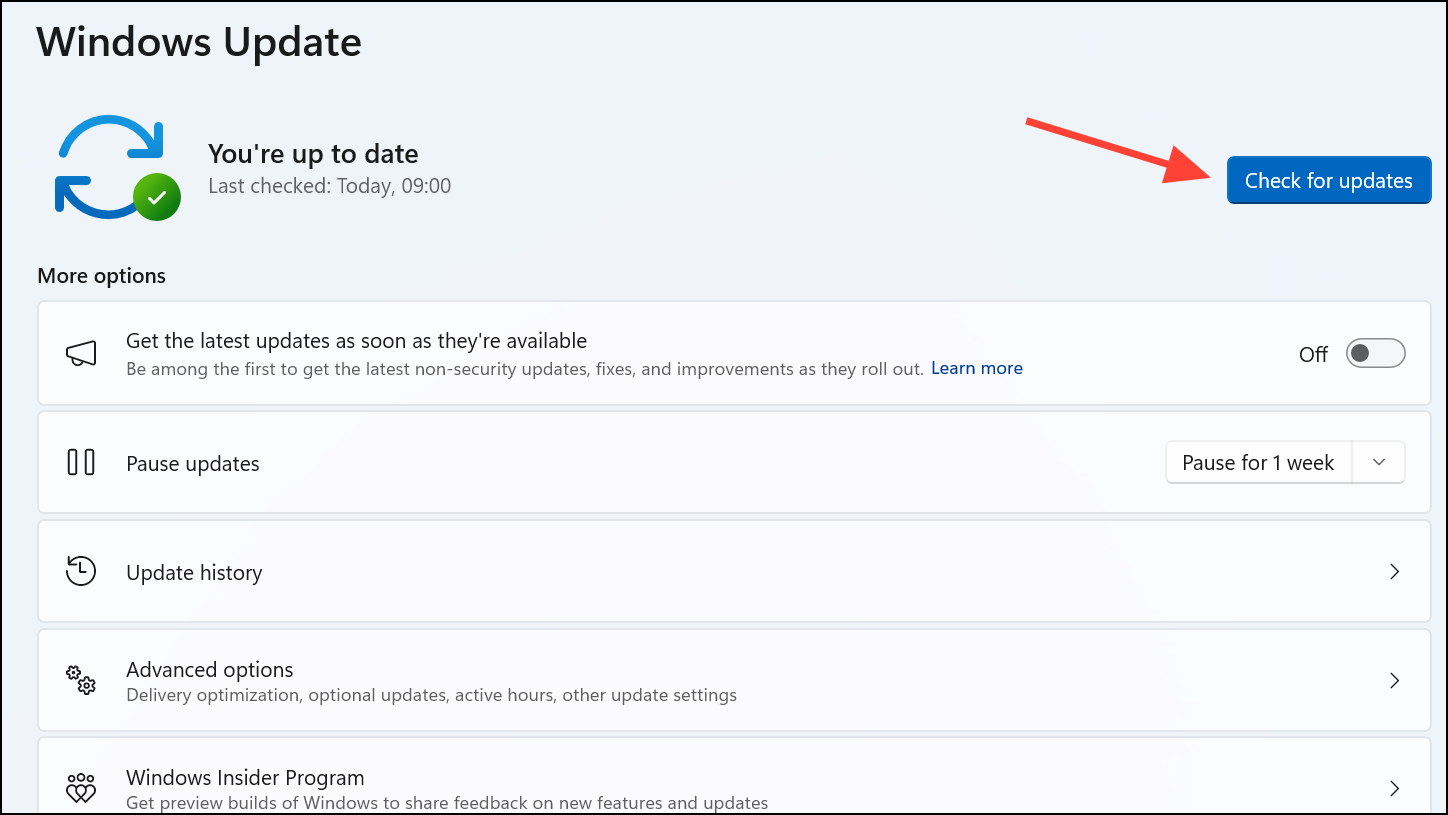
Reinstall Windows 11 Using an ISO File (In-Place Upgrade)
If the built-in Windows Update method isn't suitable, you can also reinstall Windows 11 without losing apps and files by performing an in-place upgrade using a Windows 11 ISO file.
Step 1: First, download the official Windows 11 ISO file from the Microsoft Windows 11 download page. Choose your preferred language and edition, then click the download button.

Step 2: Once downloaded, locate the ISO file on your computer, right-click it, and select "Mount". This action creates a virtual drive in File Explorer containing the Windows 11 installation files.
Step 3: Open the mounted drive in File Explorer and double-click on the "setup.exe" file. If prompted by User Account Control (UAC), click "Yes" to proceed.
Step 4: The Windows 11 Setup window will appear. Click on "Change how Setup downloads updates" and select "Not right now", then click "Next".
Step 5: Accept the license terms, and the setup wizard will perform a quick compatibility check. Afterward, a window titled "Choose what to keep" will appear. Select the option "Keep personal files and apps" and click "Next".
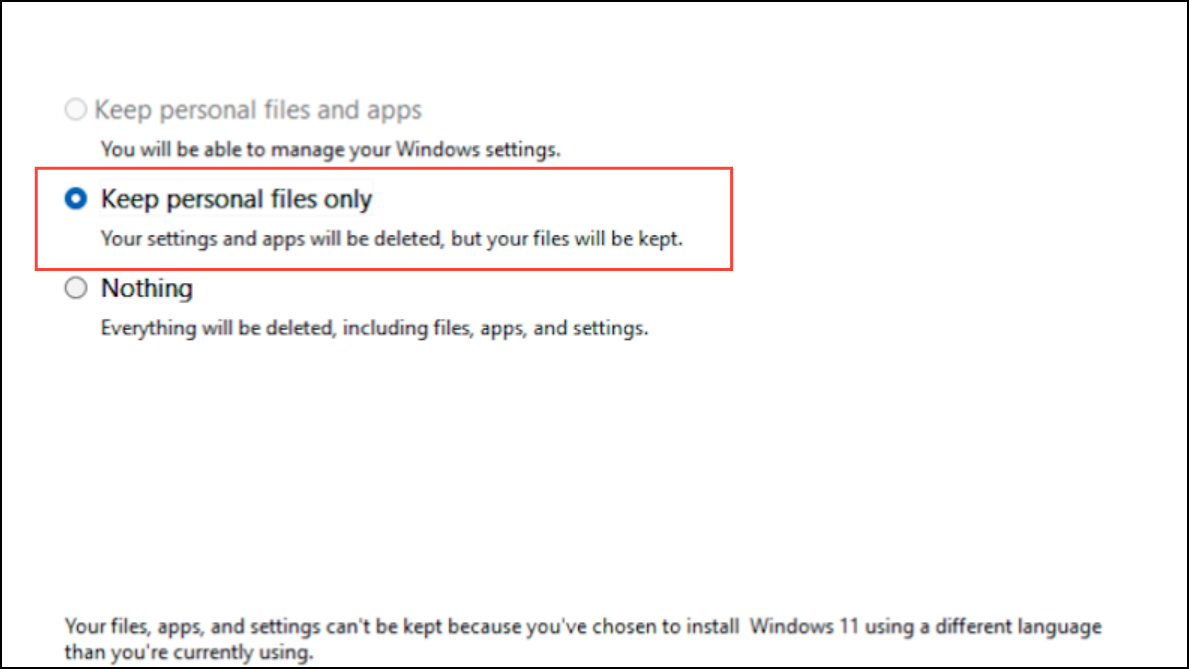
Step 6: Review your selections on the following screen, then click "Install" to begin the in-place upgrade. Your PC will restart several times during this process. Avoid turning off your computer during installation.
Step 7: After completing the installation, your computer will reboot into Windows 11. Your apps, files, and settings will remain intact, although some applications may require reactivation or minor reconfiguration.
Alternative: Reset Windows 11 (Keeps Files but Removes Apps)
If the above methods fail or aren't applicable, Windows 11 provides a reset option that keeps your personal files but removes installed applications and custom settings.
Step 1: Open Settings and navigate to System > Recovery. Under the "Reset this PC" section, click "Reset PC".
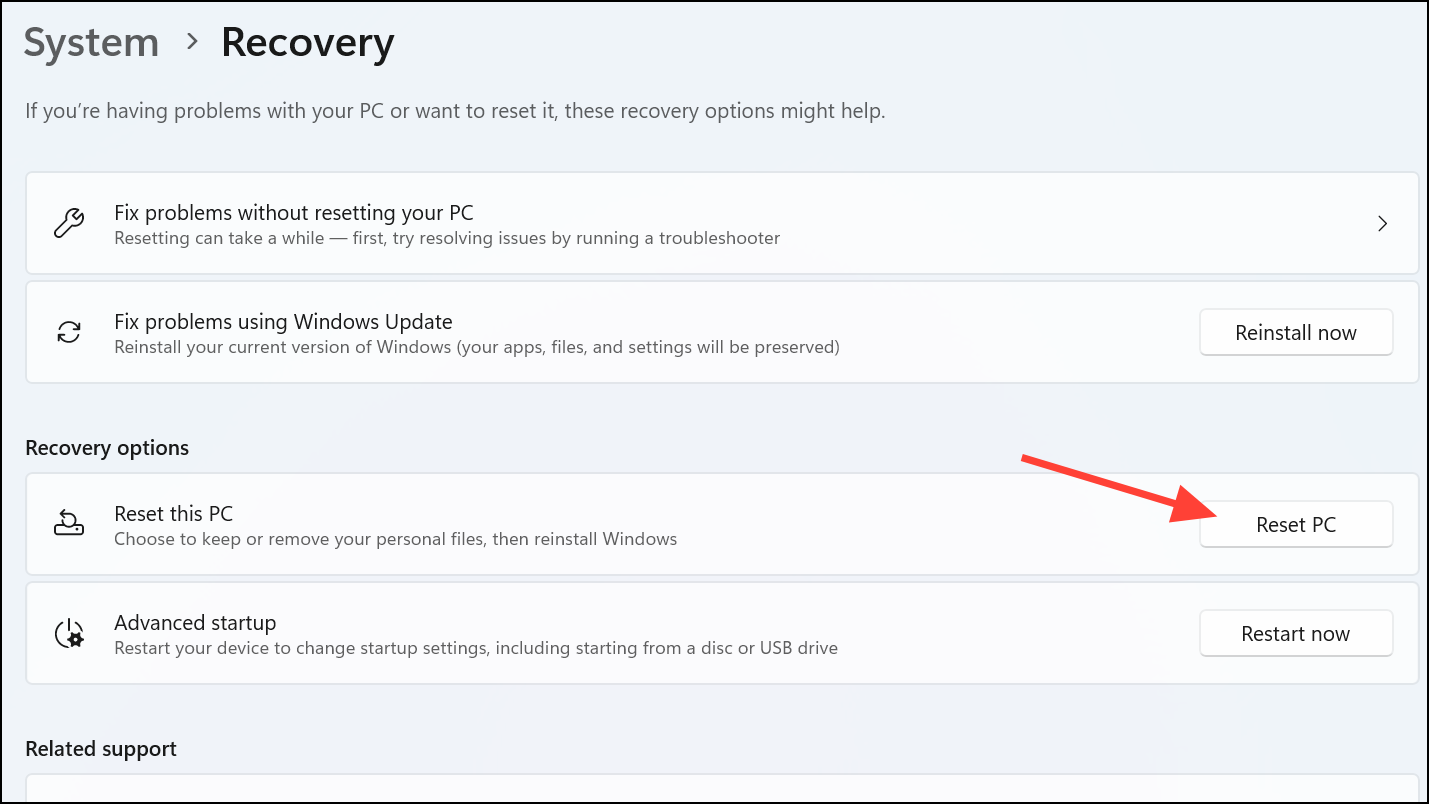
Step 2: In the popup window, select "Keep my files". Windows will then display a summary of what will be removed and retained.

Step 3: Follow the on-screen instructions to complete the reset process. After completion, you'll need to reinstall your applications and reconfigure your settings.
Reinstalling Windows 11 doesn't have to be a daunting task. By following these methods, you can efficiently restore your system's stability without losing valuable data or spending countless hours reinstalling applications. Always remember to back up critical files regularly to prevent potential data loss in the future.

